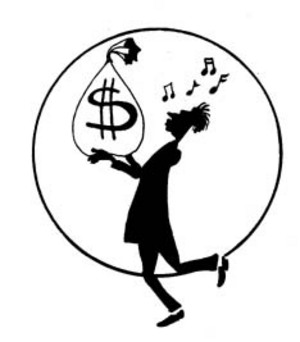What is juvenile delinquency? Well, the answer is simple: juvenile delinquency is an antisocial or criminal act performed by an individual under the age of eighteen (Wikipedia, 2005). The causes of juvenile delinquency is a little harder to explain. There are many different theories that have contributed towards the understanding of juvenile delinquency. These theories fall under three categories: biological, psychological, and sociological theories.
Biological theories revolve around the idea that individuals are predisposed to commit crime. Cesare Lombroso is considered to have contributed the major theory called positivism (Champion, 2004). His idea stated that individuals who commit crimes had inherited certain biochemical and genetic factors. Furthermore, he states that criminals tend to have certain physical features that are considered a predisposition to commit crimes, such as sloping foreheads or large earlobes (Champion, 2004). Another criminalist, Sheldon, stated that different body types made individuals behave differently. For example, he believed that mesomorphs were more likely to commit crimes because they were athletic, as opposed to the physic of an endomorph, a fat person (Champion, 2004).
Another biological theory that has come into play would be the XYY theory. This theory uses the idea in which genetic abnormalities within the chromosomes can lead to violent and criminal behavior (Champion, 2004). It has been determined when individuals have this abnormality, criminal activity and aggressiveness has been present. This type of abnormality is typically rare and cannot be sufficient when predicting criminal behavior in individuals (Champion, 2004).
Psychological theories focus on the individuals conditioning processes. There are two major types of psychological theories: psychoanalytic theory and the social learning theory. The psychoanalytic theory is based on Freud’s components: id, ego, and superego (Champion, 2004). The id is the drive for immediate gratification and can explain delinquency acts such as shoplifting or burglary. Also, the psychoanalytical approach states that traumatic experiences during early childhood can prevent the ego and superego from developing properly (Champion, 2004).
The social learning theory is based upon how an individual conforms and accepts the rules, laws, and mores of society. When there are positive role models within the home and community, the individual is able to learn positive ways of achieving goals. When there is violence in the home, the individual learns that violence is the only available way of coping with frustrations. This means that the more positive the environment a child is placed in, the more likely s/he is able to conform to society and become a nondelinquent (Champion, 2004).
The sociological theories of juvenile delinquency include the strain theory, labeling theory, and social control theory. While there are other forms of sociological theory, these have proven to be the most convincing. The strain theory states that when an individual has goals but is unable to achieve the goals set before them in a legitimate way, the individual will find illegitimate ways of achieving his/her goals (TTU, 2005). There are five modes of adaptation that people may show, when dealing with the strain theory:
1. Conformity – person accepts the goals and means to achieve the goals set by society.
2. Innovation – individual accepts the goal but uses illegitimate means to achieve goal.
3. Ritualism – individual that rejects goals but will work towards lower standard goals that have been approved.
4. Retreatism – person who rejects both the goals and the means.
5. Rebellion – person who, in a sense, creates his/her own society (Merton, 2005).
The labeling theory focuses on defining an individual as a criminal or non-criminal. When a person is labeled a criminal by the justice system, that person begins to believe that s/he really is a criminal and identifies her/himself with that identity. Another driving factor of the labeling theory is that individuals will look for the types of reactions that their behavior receives from others. Once an individual has been labeled, s/he becomes a social outcast and begins to rebel, in order to live up to his/her identifying label (Labeling, 2005).
The social bond theory, also known as social control theory, was devised by Travis Hirschi in the 1960s. There are several different bonds that an individual must make that will determine whether or not s/he will commit criminal offenses. The first one is an attachment, meaning that the socialization of an individual depends on an individual’s interest in another human being (Hirschi, 2005). The second one is a commitment, meaning that a lack of commitment towards mores and social laws can lead to delinquent behavior. The third bond that must be made is involvement. Hirschi believed that an individual who participated in positive activities would not have the time to commit criminal acts (Hirschi, 2005). The fourth and final bond that must be made is belief. When a person does not live in an area that holds the same values or when s/he believes the law is unfair, one tends to rebel and commit criminal acts (Hirschi, 2005).
There is not one set answer for why juveniles commit crime. There must be an understanding from the biological, psychological, and sociological approaches. Once these theories are examined and applied, an answer can be provided to each juvenile delinquent as each case is unique.
References
Champion, D.J. (2004). The juvenile justice system: delinquency, processing, and the
law. {4th Ed}. Upper Saddle River, NJ: Pearson Prentice Hall Inc.
Hirschi. Travis Hirschi’s social bond theory. Retrieved November 10, 2005 from
http://home.comcast.net/~ddemelo/crime/hirschi.html .
Merton. Merton’s strain theory. Retrieved November 10, 2005 from
http://home.comcast.net/~ddemelo/crime/mert_strain.html.
TTU. Theories of juvenile delinquency: social structure. Retrieved November 14, 2005
from http://www2.tltc.ttu.edu/schneider2/4327F05/4327_c4_soc_structure.htm .
Wikipedia. Juvenile delinquency. Retrieved November 14, 2005 from
http://en.wikipedia.org/wiki/Juvenile_delinquency .


